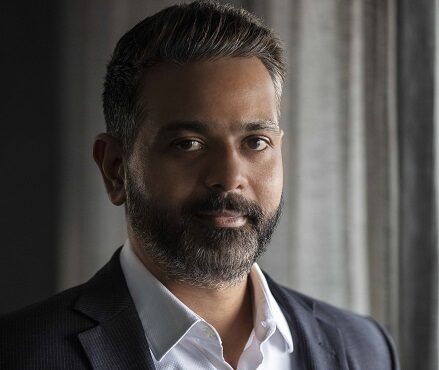Exclusive Interview with Navneet Singh, Founder & CEO of AVSAR: Transforming HR Management with AVSAR’s Innovation and Vision

In this exclusive interview, we had the pleasure of speaking with Navneet Singh, the Founder and CEO of AVSAR, a groundbreaking HR Tech company that has been reshaping the landscape of human resources management. Navneet’s visionary leadership and deep understanding of the challenges faced by businesses have positioned AVSAR as a trailblazer in the industry. Through the utilization of cutting-edge technologies and a human-centric approach, AVSAR has been empowering organizations to unlock their true potential and enhance employee experiences with data-driven HR solutions. In our enlightening conversation, Navneet shared his background in the HR industry, his approach to developing HR policies, staying updated on employment laws, handling difficult employee situations, measuring HR program effectiveness, talent acquisition and retention strategies, fostering diversity, equity, and inclusion, employee performance management, supporting professional development, and finding the delicate balance between employee needs and company goals. Join us as we delve into the mind of Navneet Singh, the brilliant force behind AVSAR, to gain insights into the future of HR technology and the transformative impact it is having on businesses worldwide.
Can you tell us about your background and experience in the HR industry?
Navneet Singh: I have worked 6years in corporate in the domain of human resource. Later, I came across the gap between the employer and employee and decided to start an organisation which fills this gap.
How do you approach developing and implementing HR policies that align with a company’s culture and values?
Navneet Singh: HR policies are created for the betterment of the employees. It involves various crucial things to focus while making policies and implementing them such as identifying the needs of the employees, research is done accordingly to set benchmarks, further policies are drafted according to recruitment compensation, performance, leaves and employee management conduct.
How do you stay up to date on changes in employment laws and regulations?
Navneet Singh: In order to stay up with current changes in employment laws and regulations I go through numerous government portals, newspapers, HR magazines and other media channels
Can you describe a time when you had to handle a difficult employee situation, and how you approached it?
Navneet Singh: There was an employee working for the past 4 years and was doing great when it comes to work but recently from the past 2-3 months her work quality was deteriorating. So, rather than going directly to her and asking what’s wrong, it didn’t make any sense. So, I took another way around and thought a better way was to make her comfortable first by talking to her regarding the work and targets and then eventually coming to the reason behind the deterioration in her work quality. So, eventually she shared that she is not in a good mental state to work. So, I told her to take a day off for a week or two and relax so that she could refresh herself physically and mentally. Moreover, I’m glad that my decision was right and when she came back after a week or two she was a new person altogether.
How do you measure the effectiveness of HR programs and initiatives?
Navneet Singh: To measure the effectiveness of HR programs and initiatives there are various techniques which can be used such as KPIs, employee feedback, cost-benefit analysis, performance metrics, and stakeholder input. These methods provide insights into program impact, satisfaction, financial implications, and alignment with industry best practices. By utilizing a combination of these evaluation approaches, organizations can make informed decisions, optimize strategies, and foster continuous improvement.
Can you discuss your experience with talent acquisition and retention strategies?
Navneet Singh: Talent acquisition involves attracting and recruiting skilled individuals through compelling job descriptions, diverse sourcing channels, and thorough assessments. Retention strategies focus on engaging employees through competitive compensation, career development, feedback, positive work culture, and work-life balance programs. Successful approaches require aligning with organizational goals, understanding talent needs, building employer branding, and adapting to market dynamics. Continuous attention and adaptation are crucial for effective talent acquisition and retention.
How do you ensure diversity, equity, and inclusion within an organization’s hiring and promotion processes?
Navneet Singh: So as to ensure diversity, equity, and inclusion in hiring and promotion, set clear goals, use unbiased recruitment practices like blind screening and diverse interview panels, provide diversity training to decision-makers, and regularly review data for disparities, taking corrective actions as needed.
Can you walk us through your approach to employee performance management?
Navneet Singh: My approach to employee performance management involves setting clear goals, providing regular feedback and coaching, conducting performance evaluations, fostering two-way communication, recognizing exceptional performance, and continuously aligning goals with organizational objectives and individual growth.
How do you encourage and support professional development and growth within an organization?
Navneet Singh: To encourage and support professional development and growth within the organisation is very crucial and can be done through on job training for enhancing their skills. Moreover, we promote team discussions including brainstorming for effective and efficient working
How do you balance the needs of employees with the goals and objectives of the company?
Navneet Singh: To balance employee needs with company goals and objectives, I prioritize open communication, active listening, and team work. By offering regular feedback, flexible work arrangements, and growth opportunities, I aim to address individual needs while aligning them with the organization’s success. Achieving a sustainable balance entails considering the long-term well-being of both employees and the company.








